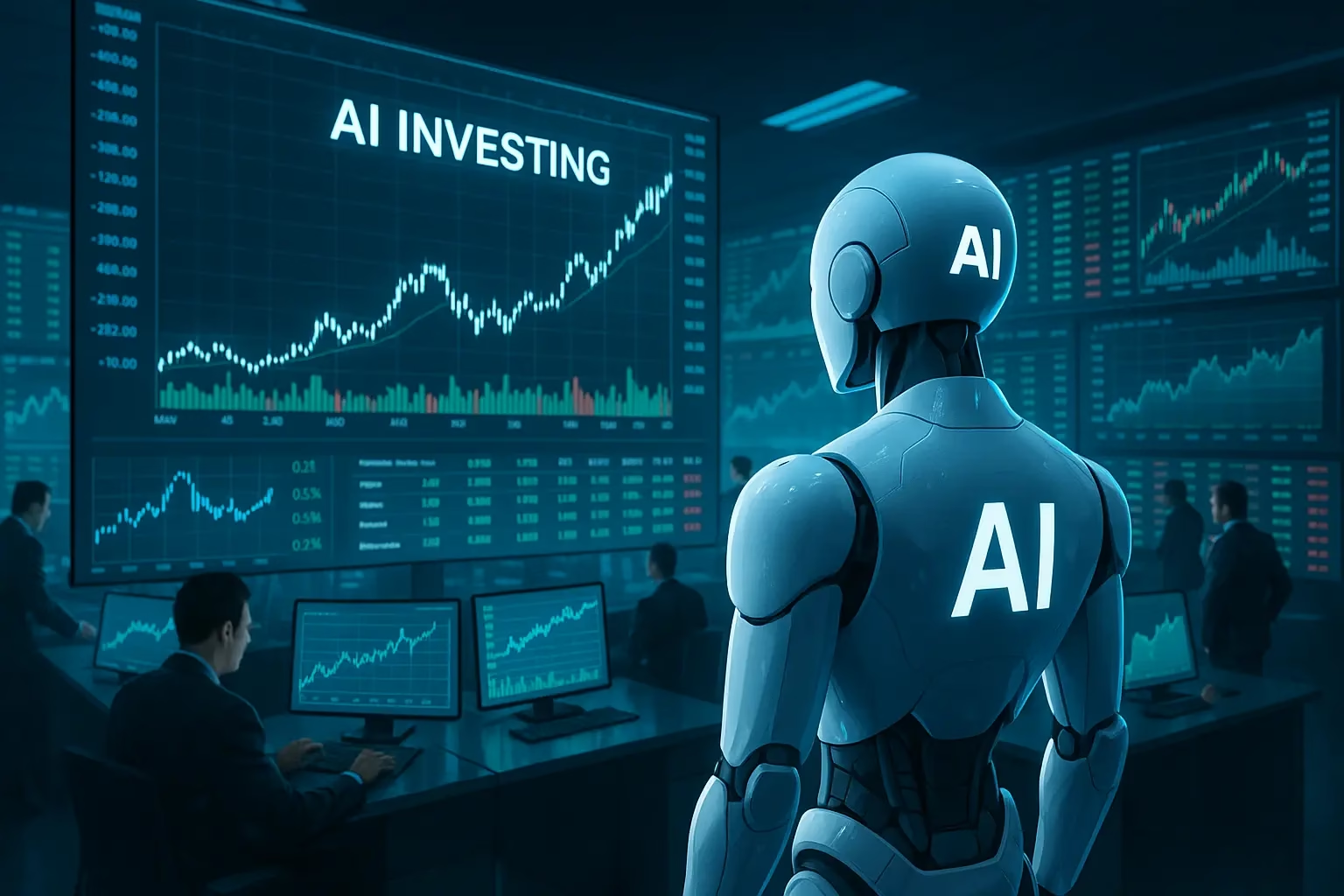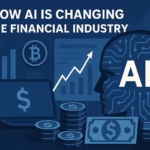The Ultimate Guide to AI Investing
Introduction to AI Investing
Artificial intelligence (AI) has rapidly evolved from being a futuristic concept to becoming a core driver of decision-making in finance. AI investing leverages cutting-edge algorithms, data analysis, and automation to identify opportunities, manage portfolios, and even execute trades—often faster and more accurately than humans.
With global markets becoming more complex and data-driven, investors are increasingly turning to AI to gain a competitive edge. From retail traders using robo-advisors to hedge funds deploying machine learning models, the world of investing is experiencing a technological revolution.
What is AI Investing?
AI investing refers to the use of artificial intelligence and machine learning to analyze financial data, predict market trends, and make informed investment decisions. These systems process vast datasets, including historical prices, market sentiment, earnings reports, and even social media chatter, to generate insights that human analysts might overlook.
Key components of AI investing include:
- Predictive Analytics: Forecasting stock price movements based on historical trends.
- Automated Trading: Executing buy and sell orders without human intervention.
- Risk Assessment Models: Evaluating potential risks using real-time data analysis.
The Rise of Artificial Intelligence in Financial Markets
Over the past decade, AI adoption in finance has surged. High-frequency trading firms were among the first to embrace AI algorithms capable of executing thousands of trades per second. Today, AI tools are more accessible, allowing everyday investors to benefit from technologies once reserved for Wall Street giants.
Some factors fueling AI’s growth in investing include:
- Data Explosion: The volume of financial and alternative data available has skyrocketed.
- Advances in Computing Power: Cloud computing and GPUs have made AI more scalable.
- Demand for Efficiency: Investors seek faster and more precise decision-making.
How AI is Revolutionizing Investing
AI in Stock Market Analysis
Traditional analysis relies on human interpretation of charts, reports, and news. AI, however, processes millions of data points in seconds, spotting patterns invisible to the human eye.
Machine Learning for Predictive Analytics
Machine learning models improve over time by learning from new data. For example, they can adapt to market volatility, making their predictions more accurate during turbulent times.
Natural Language Processing in Market Sentiment Tracking
Natural Language Processing (NLP) enables AI to read and interpret news articles, analyst reports, and social media posts to gauge market sentiment—a valuable tool for identifying shifts before prices reflect them.
.
Benefits of AI Investing
Speed and Efficiency
AI can process vast datasets in milliseconds, allowing for real-time decision-making. This speed is particularly valuable in volatile markets where a few seconds can determine profit or loss.
For example, high-frequency trading (HFT) firms use AI to scan multiple markets simultaneously, executing trades in under a millisecond—something no human can match.
Enhanced Accuracy in Decision-Making
By relying on complex algorithms and historical data patterns, AI reduces emotional bias in investing. It doesn’t panic-sell in a market dip or overbuy during a rally—it acts on logic and probability, not fear or greed.
24/7 Market Monitoring
Unlike human traders who need sleep, AI can work around the clock. Whether it’s tracking after-hours trading in the U.S. or monitoring the Nikkei in Japan, AI keeps a constant watch, ensuring you never miss opportunities.
Risks and Challenges in AI Investing
Data Bias and Model Limitations
AI is only as good as the data it’s trained on. If historical data is biased or incomplete, predictions can be flawed—leading to costly mistakes.
Over-Reliance on Automation
While automation is a huge advantage, completely removing human oversight can be dangerous. Markets can behave irrationally, and AI may misinterpret unprecedented events.
Regulatory and Ethical Concerns
Governments are still catching up with AI in finance. There are ongoing debates about transparency, algorithmic accountability, and preventing unfair advantages for large institutions.
Popular AI Investing Tools and Platforms in 2025
AI-Powered Robo-Advisors
Platforms like Betterment and Wealthfront now use AI to tailor investment strategies based on personal risk tolerance, goals, and market conditions.
Quantitative Trading Algorithms
Hedge funds and institutional investors often rely on proprietary AI-driven trading systems for advanced strategies, such as statistical arbitrage or volatility trading.
AI Stock Screeners
Modern stock screeners go beyond filtering by P/E ratios or market caps—they analyze sentiment, insider trading patterns, and even supply chain disruptions.
Proven AI Investing Strategies
AI-Driven Portfolio Optimization
AI continuously rebalances your portfolio to maintain the ideal risk-to-reward ratio, adapting instantly to market shifts.
Algorithmic Day Trading
AI can detect micro-trends and capitalize on tiny, rapid price changes, turning high volumes of trades into consistent profits.
Long-Term AI-Assisted Investing
For long-term investors, AI provides deep market research and automated rebalancing—ensuring alignment with evolving personal and economic factors.
How to Get Started with AI Investing
- Choose the Right Platform: Research whether a robo-advisor, AI trading bot, or hybrid solution fits your goals.
- Set Clear Investment Goals: Decide on time horizons, risk tolerance, and income expectations.
- Monitor and Adjust: AI works best when combined with human oversight—review performance regularly.
The Future of AI Investing
Integration with Blockchain
Smart contracts powered by AI could automate trades, dividends, and even tax reporting securely and transparently.
Advanced Personalization in Investments
In the near future, AI might tailor investment strategies based not only on your finances but also on lifestyle choices, health trends, and even travel plans.
AI in ESG Investing
AI will help investors measure and track companies’ environmental and social impacts in real-time, aligning investments with personal values.
Frequently Asked Questions (FAQs)
1. Is AI investing safe?
AI investing is generally safe when used with trusted platforms and human oversight, but all investing carries risk.
2. Can AI beat human traders?
In terms of speed and data analysis, yes—though humans still excel in judgment during unprecedented events.
3. How much money do I need to start AI investing?
Some robo-advisors start at $100, while others require thousands for advanced tools.
4. Does AI investing work for cryptocurrency?
Yes—AI can track crypto markets 24/7, using predictive models for volatility.
5. Will AI replace financial advisors?
Not entirely—AI enhances advisors’ efficiency but human insight remains essential.
6. What’s the biggest risk in AI investing?
Over-reliance on automation without understanding the underlying strategies.
Conclusion
AI investing is transforming how we approach financial markets, offering unprecedented speed, efficiency, and insight. While risks remain—especially in over-reliance and data bias—combining AI tools with human oversight can produce powerful results. As AI continues to evolve, investors who adapt early may enjoy significant advantages in the years ahead.



